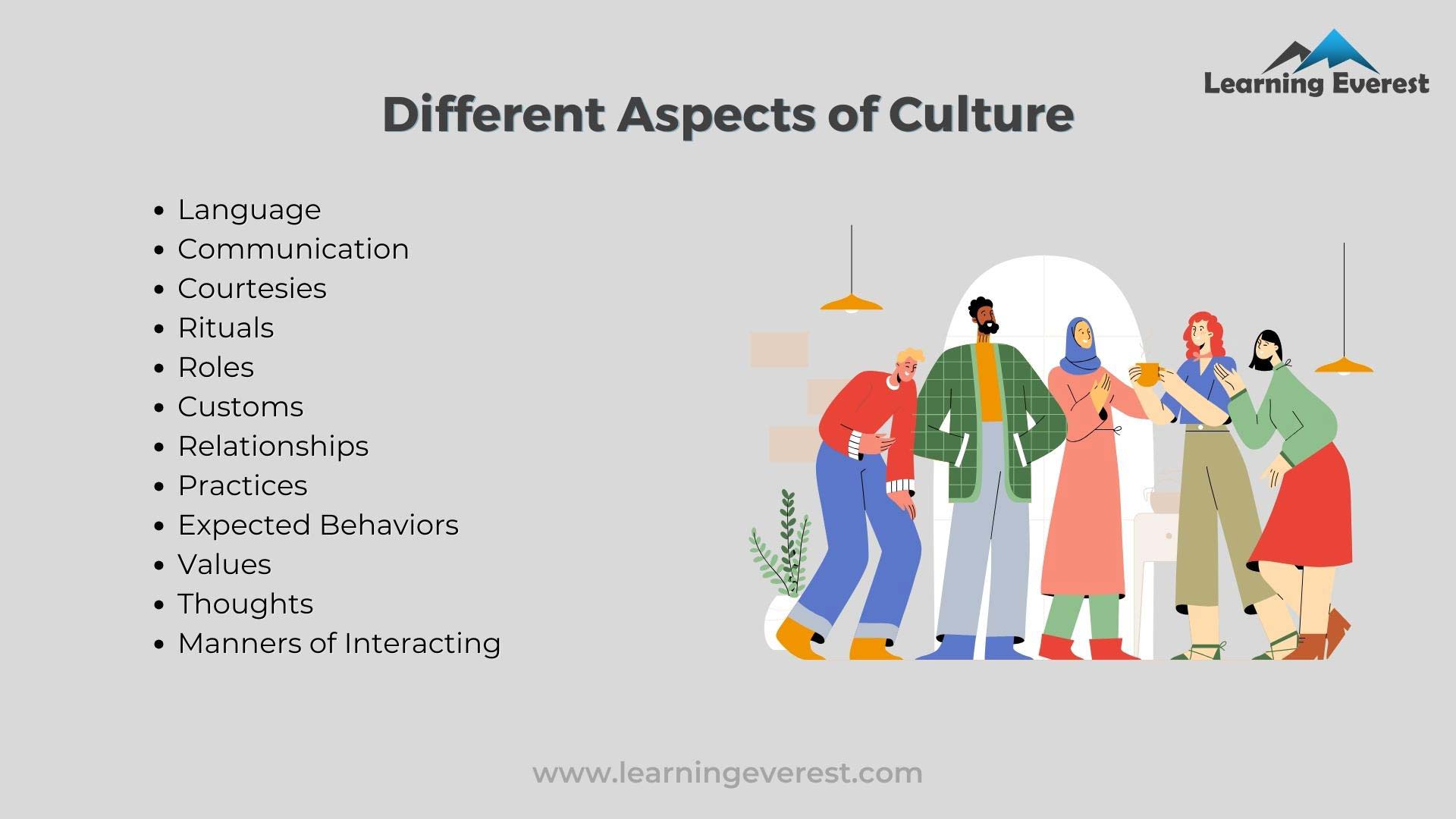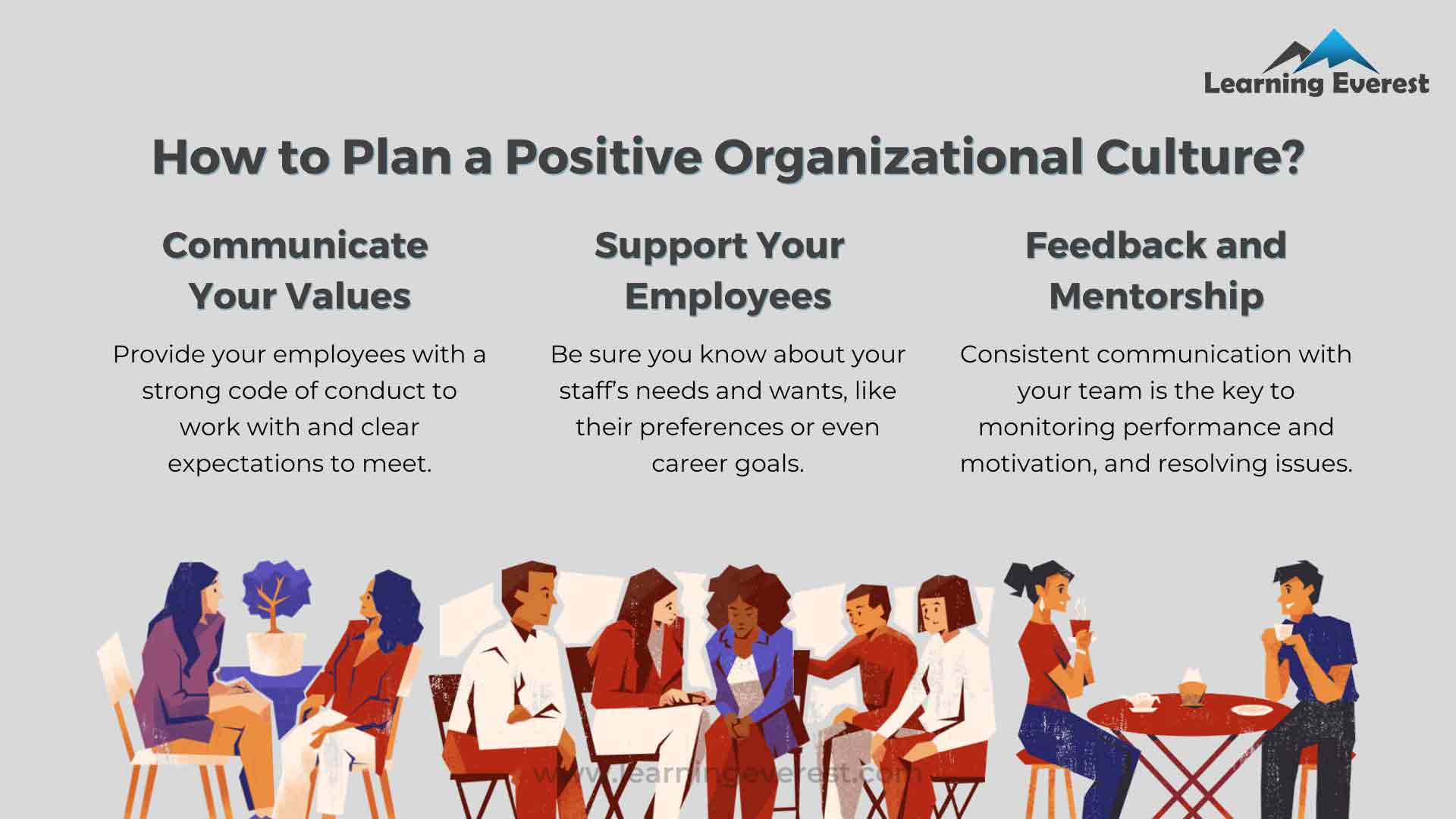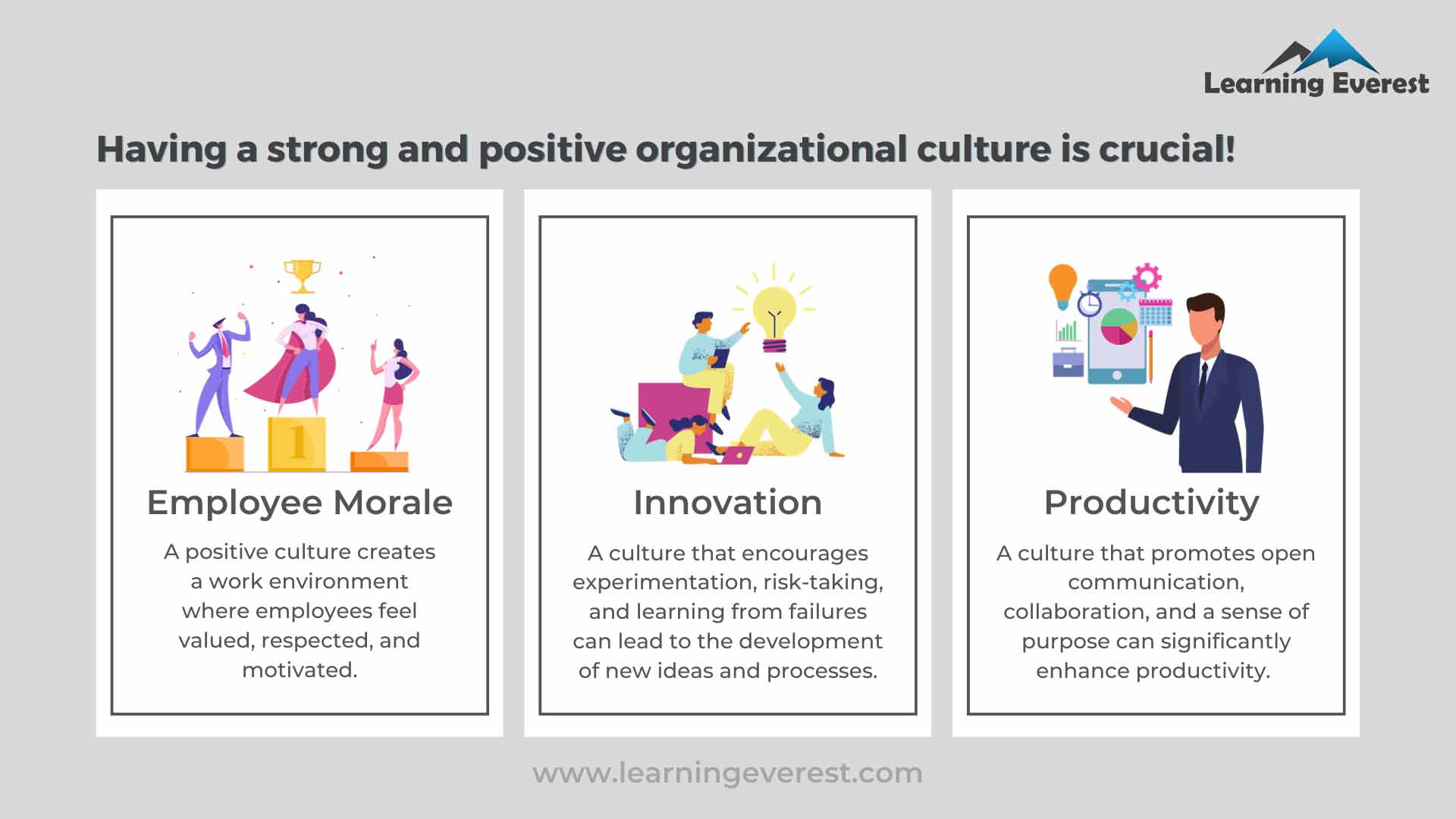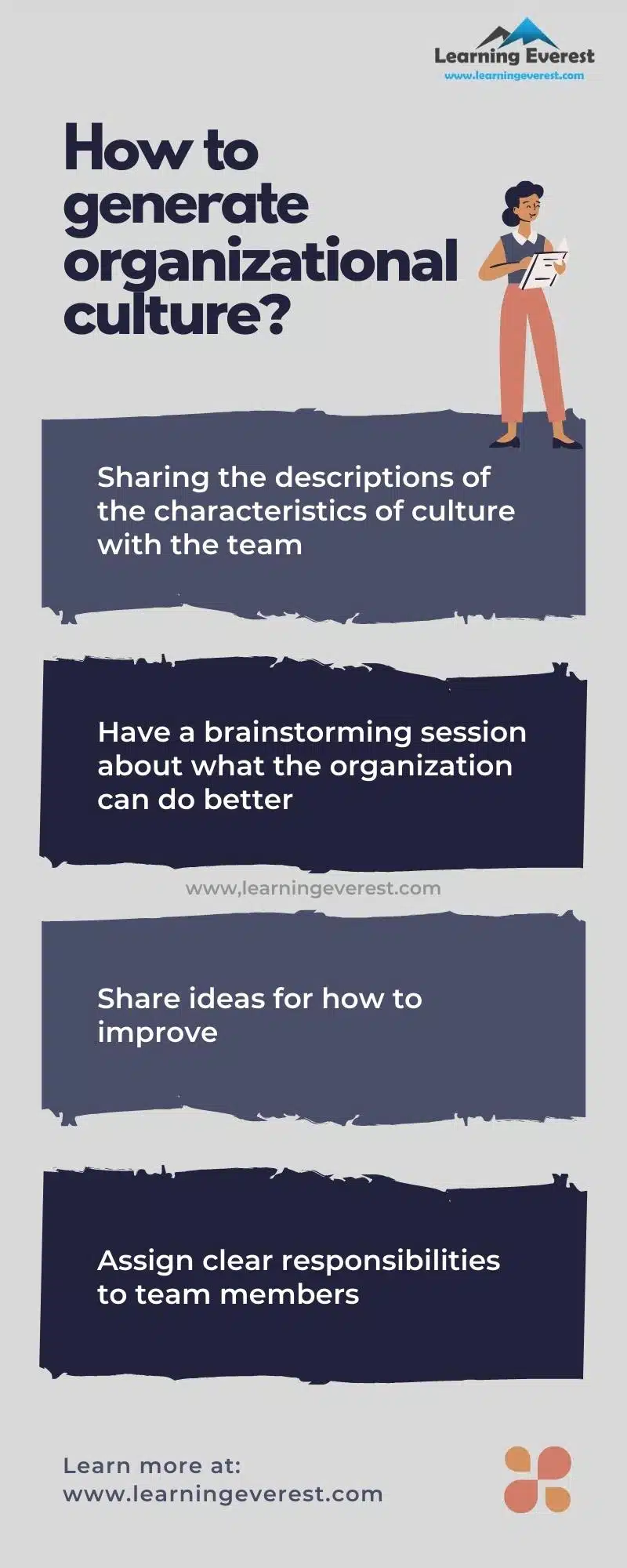Want to learn what the 7 characteristics of organizational culture are, so keep reading.
Table of Contents
- What is culture?
- What is organizational culture?
- Characteristics of organizational culture
- But how can you apply the characteristics of culture to your organization?
- Infographics
- Knowledge Check!
- Conclusion
- Frequently Asked Questions (FAQs)
- How do we define culture?
- What are the five characteristics of culture?
- What is organizational culture?
- What is an organizational culture example?
What is culture?
Culture is a broad concept that includes several important aspects of human life. The main characteristics of culture are the principles, beliefs, behaviors, and values shared by a group of people.

Key Characteristics of a Good Organizational Culture
All cultures share the following features:
- Culture can be learned. It is not biological; we do not inherit culture. Much of the learning culture is an unconscious practice. We learn culture from our surroundings.
- Culture is shared. Because we communicate culture with other group members, we can act socially appropriately and predict how others will work. Despite the shared nature of culture, that does not mean that culture is homogenous.
- Culture is based on symbols. Symbols can vary cross-culturally and can be arbitrary. The symbols only have meaning when people in a culture agree on their meaning. Language, money, and art are all such symbols.
- Culture is integrated. All aspects of culture are related to one another.
- Culture is dynamic. Cultures interact and change. Cultures are in contact with other cultures, so they exchange ideas and symbols.
But how are these characteristics of culture relevant to your workplace?
What is organizational culture?
Organizational cultures reflect the company’s division of labor, a span of control, hierarchy, formalization, and centralization. Different systems have different levels of each of these characteristics. In addition to illustrating the chain of command, organizational charts show the division of labor, which reflects the degree to which employees specialize or perform various tasks as generalists.

Master the Art of Planning a Positive Organizational Culture
Characteristics of organizational culture
Organizational cultures can vary greatly. Acknowledging the difference is also characteristic of culture. Here are five common characteristics of the culture of a positive workplace:
- Good communication: Building effective communication is one of the most important characteristics of culture for positive workplace culture. Managers should make themselves accessible and give the employees regular feedback on performance. They should provide clear communication, assistance, warmth, and support to their subordinates. Employees should also be encouraged to communicate with other team members and be provided with the proper tools to do so.
- Opportunities for upskilling: The employees need a chance to better themselves and grow on the job. Organizations with a positive work environment provide employees with clear expectations for advancement and the tools and training needed for success. This can be done by providing training programs and creating specific goals for employees to reach promotions and raises.
- Opportunity for collaboration: Creating a sense of unity makes employees feel like they are working for something bigger than themselves. Companies, therefore, should encourage collaboration among employees to boost performance.
- Performance reward schemes: Acknowledging good work is important. It encourages employee engagement. Be it formal or informal, rewards like increases in salary, promotions, etc., make employees feel valued.
- Strong values: Producing a sense of purpose among employees is a key element for any sustainable organization. Building a purpose-driven culture starts with a set of core values that are then reflected in the company’s long-term goals. The organization should generate clear objectives and performance expectations. It should include the degree of direct supervision used to control employee behavior.
- Outcome orientation: The degree to which the management focuses on the results or outcomes of the organization rather than the techniques and processes used to achieve these outcomes. It denotes the degree of responsibility, freedom, autonomy, and opportunities for exercising initiative that individuals have in the organization.
- Employee orientation: The degree to which management decisions consider the impact of outcomes on employees within the organization.
When we appraise an organization based on the above characteristics of culture, we get a complete picture of the organization’s culture. This picture becomes the basis of members’ shared norms, beliefs, and understanding of the organization, how things are done, and how the members are supposed to behave.

Creating a Positive Organizational Culture
But how can you apply the characteristics of culture to your organization?
Now that you have had an opportunity to learn about the characteristics of culture, you can use some strategies to apply them to your team:
- Organizational culture is the collection of values, goals, and traditions that guide and inform the actions of all team members. Consider sharing the descriptions of the characteristics of culture with the team.
- Have a brainstorming session about what the organization can do better. Also, you can share ideas for how to improve the areas needing to move from red to green.
- Get tactical, identify clear, measurable objectives, and assign clear responsibilities to team members. Develop a project plan for each program.
This Glassdoor article emphasises how organizational culture is more important than the salary.
Infographics

7 Important Characteristics for a Good Organizational Culture
Knowledge Check!
Conclusion
Organizational culture is a key driver in shaping organizational behaviors. Organizational culture is not stagnant. The characteristics of culture must evolve for the organization to stay relevant in a changing environment. And it is the duty of leaders to convince their employees of the benefits of change and show that the new culture is the best way to operate to yield success.
Frequently Asked Questions (FAQs)
How do we define culture?
Culture is a broad concept that includes several important aspects of human life. The main characteristics of culture are the principles, beliefs, behaviors, and values shared by a group of people.
What are the five characteristics of culture?
Five key cultural characteristics are that culture is learned, shared, symbolic, integrated, and dynamic.
What is organizational culture?
Organizational culture is the collection of values, goals, and traditions that guide and inform the actions of all team members.
What is an organizational culture example?
Building effective communication is one of the most important characteristics of culture for positive workplace culture. Managers should make themselves accessible and give the employees regular feedback on performance. They should provide clear communication, assistance, warmth, and support to their subordinates. Employees should also be encouraged to communicate with other team members and be provided with the proper tools to do so.





